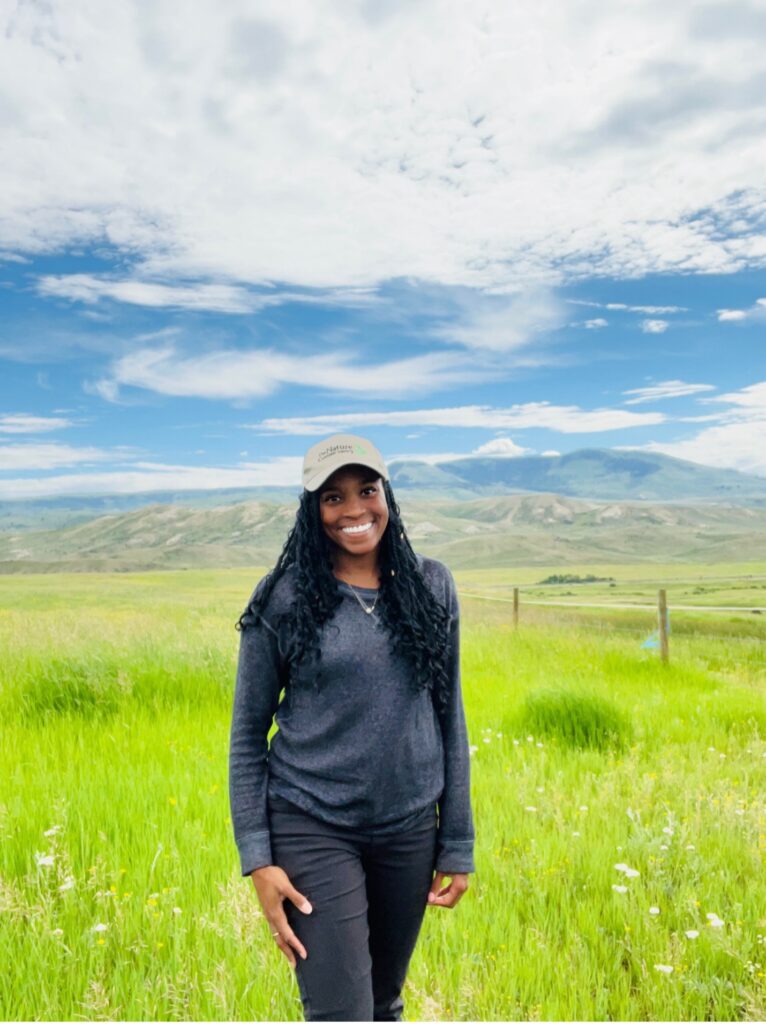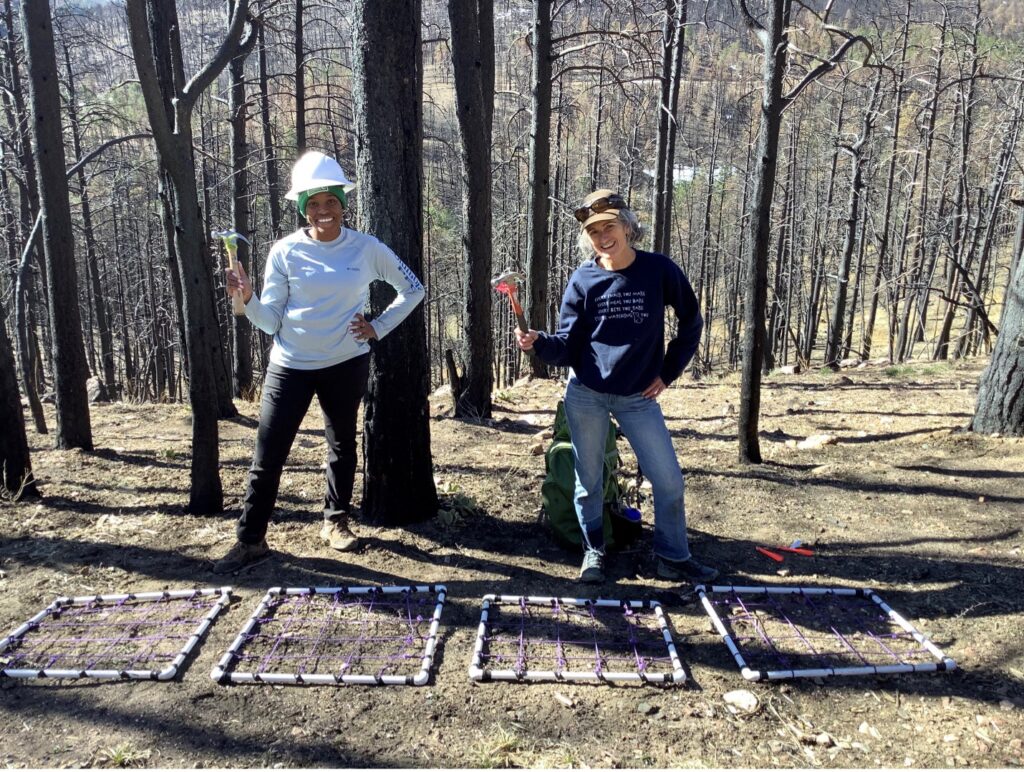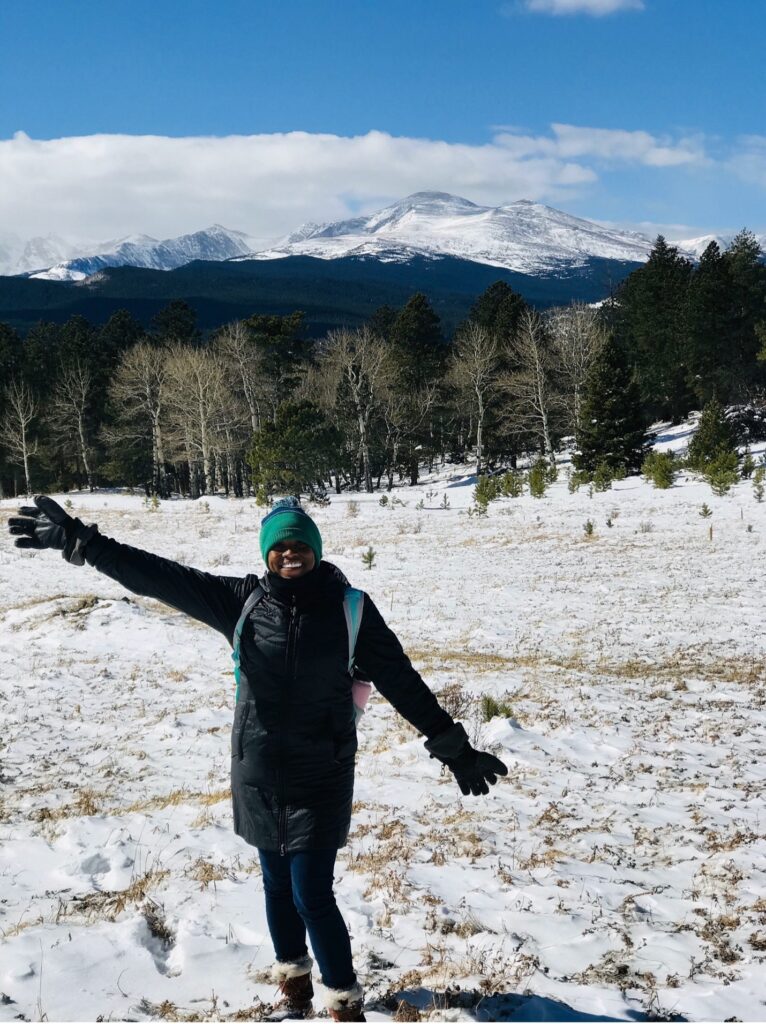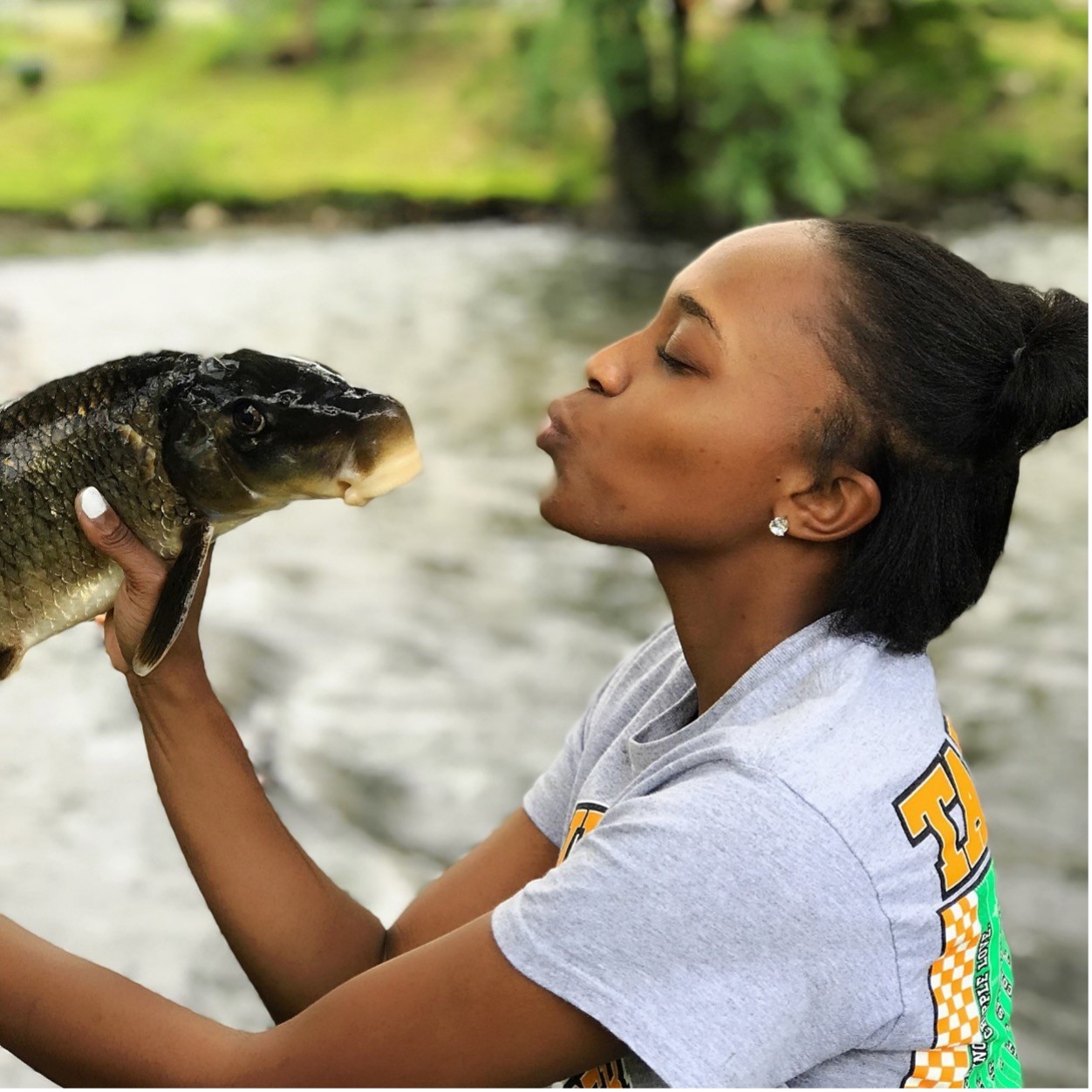It’s fitting that Carleisha Hanns grew up to be a cartographer—her early life spanned continents. She was born in Belgium and raised in Tennessee by military parents who lived and worked all around the world before her birth.
The Odum School of Ecology graduate student and 2022 James E. Butler Fellow now applies leading mapping technology to ecological conservation. Among other projects, she’s determining the suitability of stream restoration sites through GIS—or geographic information systems, digital tools used to visualize and analyze geographic data.
“I’m really passionate about using science to create management strategies for practitioners,” said Hanns, a River Basin Center student affiliate working in the Wenger-Freeman lab.
Science education through the years
Hanns credits her initial interest in science to two things—her father’s investment in nature and her science teachers’ passion.
“I was always trying to bring some animal home, and my parents would just say, ‘You cannot take this box turtle. That’s illegal,’” quipped Hanns.
Her dad taught her about bugs and plants, and her whole family—including her two older brothers—spent a lot of time outdoors.
Her early education was hugely influential, too.
“In high school and middle school, I had really brilliant science teachers,” said Hanns. “They were all women and just very inspiring and knowledgeable. That really left a mark on me. I really liked learning about the world that I live in and trying to understand how it works.”
She’s continued their legacy, offering representation to the next generation.
While in Colorado, she spoke at the Denver Natural Science Museum’s Girls & Science program, which introduces girls of all different ages to a range of science careers.
She made her way there after earning her bachelor’s degree in ecology and evolutionary biology from the University of Tennessee, where she discovered her interest in freshwater ecology.

After a stint at Disney World educating people about conservation practices, Hanns pivoted to a role at Conservation Fish Hatcheries Inc. There, she propagated rare and endangered fish throughout the Southeast.
She began teaching herself GIS, expanding on skills built during her undergraduate degree. That was when she saw an early career opportunity with The Nature Conservancy’s Denver chapter. She moved to Colorado and undertook several mapping projects for conservation efforts. Hanns gained an appreciation for the breadth of the work.
“I got to see all the moving parts that make conservation work,” she explained.
In the field
It was her love of her job with The Nature Conservancy that made her want to enroll in graduate school. To continue doing the kind of hands-on work she loved, she knew she needed to pursue another degree. She turned to the River Basin Center at UGA, whose mission closely aligns with her passion for applied freshwater science.

“I saw the ICAS program—the integrative conservation and sustainability program—and I thought, ‘That’s exactly what I want to do.’ I want to work on conservation projects and planning, and I want it to be in freshwater,” said Hanns.
The Nature Conservancy kept her on part-time, and she’s continued her mapping work with them alongside her graduate studies.
She isn’t exactly sure what direction her thesis will take. Right now, her work centers on the Conasauga River Basin and how shoals impact fish populations. With shoals disappearing, some benthic fish like darters may experience disruption to their life cycle or have a harder time moving around.
“I’m interested in understanding if the distance between shoals affects the flow of genetics, potentially. I want to know if fewer shoals cause separate populations because some fish can’t travel as well,” explained Hanns.
Outside of academia
Outside of school and research, Hanns is a runner and hiker. She also creates black-and-white animal portraits in her spare time—which, as a graduate student, there isn’t much of.
When she finishes school, she’ll seek some kind of applied research position. She loves The Nature Conservancy, but would be amenable to a range of roles.
“I’m open to any NGO or government positions where you’re using science-backed management strategies and developing conservation strategies,” she said. “I like to be in that type of role: project management of a conservation plan. That’s kind of like my dream role.”
She’s especially passionate about freshwater in part because she wants to ensure equity for women like her.
“Being a woman of color, we’re disproportionately affected by water management not being done well,” she explained.
And she’d love to fold science communication into her work somehow.

“Communication is important in all science, but especially in conservation and sustainability, because those have direct impacts on people,” she explained.
To Hanns, it’s not just about doing right by communities—it’s also about effective conservation.
“We say in conservation that we want people to do their part,” she said. “But it’s hard for people to understand the effects of their actions if they really don’t understand the deep connections that they have with nature.”
And as Hanns points out, advancing public education and input doesn’t have to be hard.
“Sometimes it’s just a simple conversation or a communication pamphlet. We have to meet people where they’re at.”

